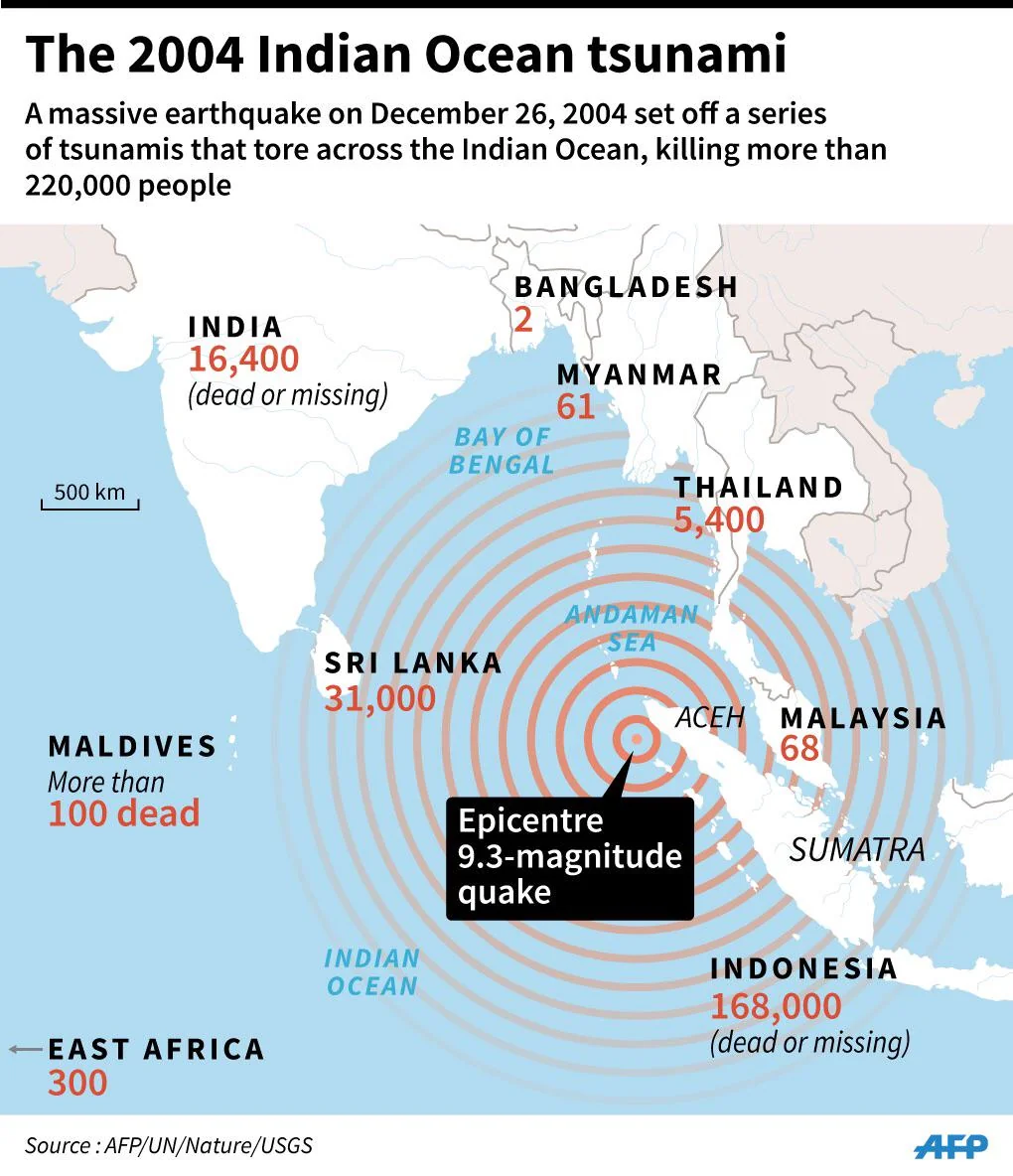-
17 Jan 2025
GS Paper 1
Geography
Day 41: Tsunami risks along India’s coastal areas pose a serious challenge. Discuss the government’s strategies for risk reduction and coastal resilience. (150 words)
Approach
- Provide a brief overview of Tsunami risks along India’s coastal areas.
- Discuss the government’s strategies for risk reduction and coastal resilience.
- Conclude Suitably.
Introduction
Tsunamis are giant waves caused by earthquakes or volcanic eruptions under the sea. India’s extensive coastline, stretching over 7,500 km, faces significant tsunami risks, particularly in regions such as Tamil Nadu, Andhra Pradesh, Odisha, and the Andaman and Nicobar Islands. The 2004 Indian Ocean tsunami highlighted the severe impacts such natural disasters can have on human lives, infrastructure, and ecosystems.
Body
Government strategies for reducing tsunami risks and enhancing coastal resilience:
- Early Warning Systems: The Indian Tsunami Early Warning Centre (ITEWC) was established in 2007 by the Union Ministry of Earth Sciences.
- The ITEWC functions as an approved Tsunami Service Provider of the Indian Ocean Tsunami Warning & Mitigation System (IOTWMS) and is an integral part of the Global Tsunami Warning and Mitigation System.
- Real-time Monitoring: Real-time ocean monitoring systems were developed to detect tsunami-producing earthquakes and issue alerts in as little as 10 minutes.
- India became the 5th country globally to have an advanced tsunami warning system, joining the US, Japan, Chile, and Australia.
- Tsunami Geology Research : Researchers started studying seismic slips at plate boundaries to understand the processes that occur before and after major earthquakes.
- Investigations indicated a perceptible downward ground movement in South Andaman between 2003 and 2004, before the megathrust earthquake of 2004.
- Nuclear Plant Vulnerability Studies: Following the 2004 tsunami, researchers assessed the vulnerability of nuclear power plants, such as Kalpakkam, to tsunami risks.
- The Kalpakkam nuclear plant shut down automatically due to rising water levels and the reactor restarted after six days.
- Global Cooperation: The tsunami warning system has become more globally coordinated, with countries working together to monitor earthquakes and tsunamis.
- E.g., After the 2004 Indian Ocean tsunami, the UNESCO Intergovernmental Oceanographic Commission (IOC) was tasked with establishing global tsunami warning services across ocean basins.
NDMA Guidelines for Tsunami Mitigation :
- Risk Mapping: Conducting comprehensive tsunami risk assessments for vulnerable coastal areas, identifying the regions at the greatest risk from tsunamis.
- Early Warning System: Establishing and maintaining an effective tsunami early warning system that includes seismic sensors, tide gauges, and ocean buoys to monitor potential tsunami threats.
- Disseminate tsunami warnings through channels like SMS, radio, television, and public announcement systems.
- Coastal Zoning: Relevant authorities to implement the Coastal Regulation Zone (CRZ) Notification for controlled and sustainable development in coastal areas.
- Promoting safe development in low-risk areas, with a focus on natural buffers like mangroves and sand dunes.
- Tsunami-Resilient Infrastructure: Building tsunami-safe infrastructure, including elevated buildings, reinforced structures, and emergency shelters above expected tsunami wave heights.
- Constructing seawalls, breakwaters, and embankments in high-risk areas to reduce the impact of tsunami waves.
- Community Preparedness: Conducting regular public awareness campaigns on tsunami risks, warning signs, and emergency actions.
- Creating tsunami evacuation plans for coastal areas with clear signage, maps, and regular drills.
- Institutional Framework: Coordinating national, state, and local agencies, including NDMA and SDMAs, for effective tsunami mitigation and response.
- Response and Recovery: Developing tsunami response and recovery plans with search and rescue, medical aid, shelters, and food and water distribution.
- Establishing strategies for reconstructing affected areas, including financial and logistical support for rebuilding homes, infrastructure, and livelihoods.
Conclusion
By aligning these efforts with the broader framework of the SDG 11 (Sustainable Cities and Communities) and SDG 14 (Life Below Water), India can create a more resilient coastal ecosystem, protect vulnerable populations, and ensure long-term environmental sustainability.





